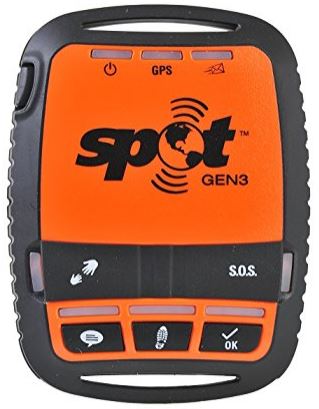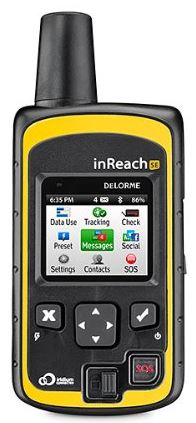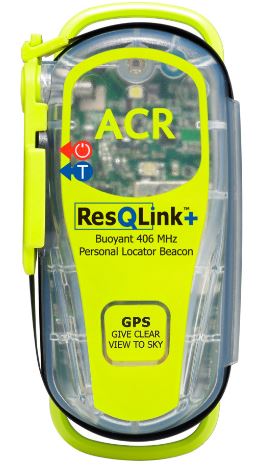Navigational technology has come a long way. Ten years, the concept of having a digital map in your car was still novel. Today, we have the same technology in the palm of our hand. But GPS has always been a one-way street. It wasn’t until recently that technology has evolved to allow two-way communication for consumer satellite gear.
GPS beacons allow you to log your movement data, and usually send some kind of signal to the cloud. They are used by hikers, fishermen, shipping companies, and many other staff. While rudimentary versions of this technology have been on the market for quite some time, the latest generation has dropped the price and added a ton of great features that consumers have been raving about.
We went hands on to put three of the most popular beacons to the test. We’ll show you what they can do, and help you find one that is right for your needs.
Spot Gen3 Satellite GPS Messenger
Commonly sold in outdoor enthusiast shops, the Spot line of GPS trackers is one of the most popular on the market. When they first came out, the product was quite novel. But despite amazing sales there were some serious flaws with the system. The buttons were notoriously unresponsive and frustrating to use, and the system was often found to be counter intuitive. The Gen3 is said to be a must-have upgrade, but can it still hold its own against competing models?
The Basics
Despite the name, the Spot Gen3 is technically not a GPS tracker. Instead of GPS, it connects to a private network of satellites known as GEOS. This network operates on the same core principles as GPS, but with additional functionality for two-way communication.
The Gen3 is extremely easy to use. Charge it up, throw it in a back or clip it to your pocket, and you’ll always have a real-time connection to the outside world. Three primary buttons on the face of the device provide you with direct access to the main features. One of these features is for emergency use, allowing you to call in the authorities with the touch of a button. This could be police, the fire department, or search and rescue. This will be determined by your location at the time the beacon is sent. But since it’s using its own custom network, there is a bit more to this system than meets the eye.
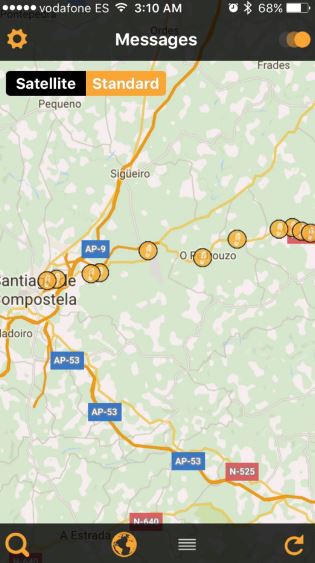
Features
Without any additional modification or configuration, the Spot comes preset with a few basic features. You can use the “check-in” feature that lets your contacts know exactly where you are. The Track button simply begins logging navigational data. This is perfect for helping you track that incredible hike you just went on, or logging the best fishing spots. SPOT assist is similar to an emergency beacon, but the message is sent to your friends or family. SOS does the same thing, but the proper authorities are alerted. Finally, you can program in a custom message to be sent to the people of your choice.
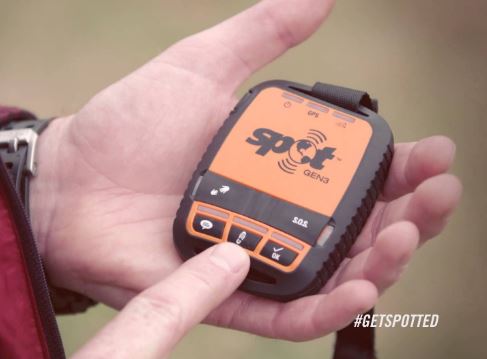
Performance
As with any portable product, battery life is essential. One of the things that is unique to the Gen3 compared to the previous generations is the ability to use motion or time activated tracking. You can set it up to update your location in 2.5, 5, 10, 30 or 60 minute intervals. You can also set it up so that increments are skipped if the device has not moved since the last update. This ensures that battery life is preserved, even if you forget to turn it off before you set up camp for the night.
Despite the changes to the update system, optimization of the internal components has allowed the Spot to get nearly twice the battery life of the previous generation. With four AAA batteries, you can transmit over 1,000 check-in or custom messages.
Another improvement with the Gen3 is the reliability of sent messages. The internal antenna system has been completely overhauled, eliminating issues with lost or delayed messages that was so common with the previous generation.
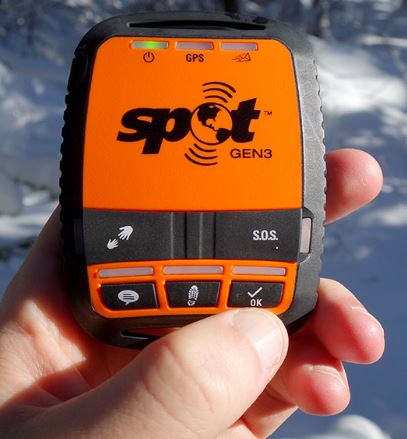
Durability
The SPOT Gen3 is made primarily from plastic and rubber. Compared to most of the products we’ve reviewed, it’s extremely durable and reliable. The ridged edges make it easy to hold in the hand, and it can be easily secured through the two loops on both the top and the bottom. It’s completely weather sealed, so you know you can rely on it whether you’re in the high seas or the alpine mountains.
DeLorme InReach SE Satellite Messenger
In many ways, DeLorme is the new kid on the block. But despite the hurdles of developing new product from the ground up, their InReach line of satellite messengers has shown the world just how powerful a satellite messenger can be.
The Basics
The DeLorme inReach SE is a handheld device that looks very similar to a ruggedized palm pilot from several years ago. But even though the interface is a little more basic then the Android smartphones we’re used to, there is still a lot of powerful hardware in place. This is another device that connects to the GEOS network, which has shown to be much more powerful and reliable than the GPS network. Communication takes place through the Iridium satellite network, which is one of the few solutions that provides 100% worldwide coverage. You do, however, need to subscribe to a data plan to use it, and it’s not inexpensive.
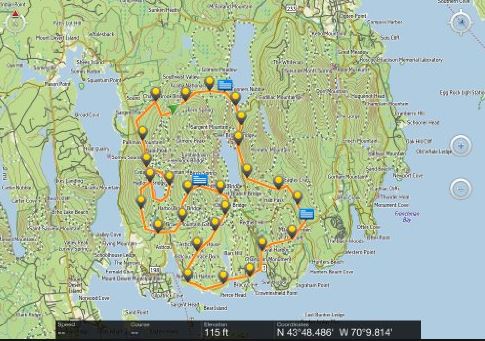
DeLorme has a 24 hour per day, 7 day per week search and rescue monitoring center. When you send a beacon, you’re not just getting some automated response. A real live person will look at all the data they have, and work hand in hand with the authorities to make sure that you receive the help you requested.
There are two ways to use the inReach SE. You can use it in standalone mode, utilizing all of the features through the touchscreen interface. The front page gives you quick access to your data use, tracking settings, signal check, global settings, messaging, social media, contacts, and SOS. You can also pair the device with your Android or IOS smartphone, allowing it to operate as more of a modem so you can use the same apps you use everyday.

Features
At their core, all of these devices are safety tools. Most of the time, sending an SOS signal is a one way thing. You hit the beacon, and hope that the message was received. But when you hit the SOS button on the inReach, you open up a two way channel of communication. You can send 160 character messages that are just like a standard text, giving you peace of mind knowing when search and rescue will respond. If needed, you’ll be able to relay essential information back that makes it easier for the rescue team to find you.
If you’re using the EarthMate app on your mobile phone, a number of additional features are unlocked. You’ll have access to global topographic maps, turning your phone into one of the most powerful navigation tools on the market. Your coordinates, elevation, and movement data are all superimposed on the map, personalizing the experience.
Because you’re operating with limited data, a Web Portal was created to allow you to navigate the internet efficiently. The web portal allows you to configure preset messages, download communication from your social media accounts, and share your GPS data with the world.
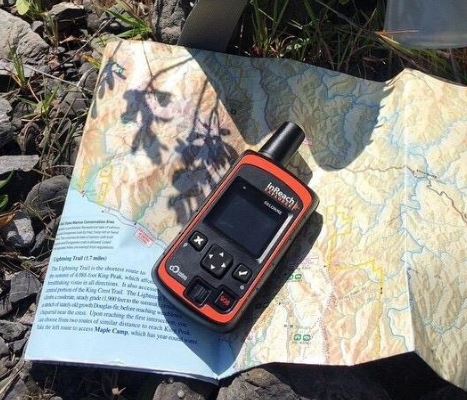
Performance
Although the range of satellite communication is amazing, the speed leaves something to be desired. That being said, this system has a unique design that makes it one of the fastest on the market. The web portal is almost entirely server side. The data sent to your device is extremely compressed and simple. This means that performing web-based actions feels snappy and responsive, just like you’re using your mobile phone.
Lithium batteries allow the device to get 100 hours of use, even when you’re using it constantly. It can be recharged through a standard micro USB cable, so this can easily be extended just by carrying along an additional battery.
ACR ResQLink Plus 406
ACR has been in the GPS business for many years. When they designed the ResQLink system, they set out to create something that was unparalleled in simplicity and reliability. The 406 is the latest version of this product, and has been used in government, emergency response, and law enforcement for quite some time.
The Basics
The bright yellow design of the ACR ResQLink Plus 406 is something that you’ll never misplace. Although there aren’t many controls on the front, the design is more than just a funky look. The completely sealed plastic enclosure is filled with air, allowing it to float on water. Inside, a powerful GPS antenna and navigational processor allow it to pinpoint your exact location with extreme accuracy.
One of the nice things about the ACR beacon is that there are no monthly fees to pay. You do have to register the device when you first set it up, but from then on the only cost you’ll encounter is the purchase price.
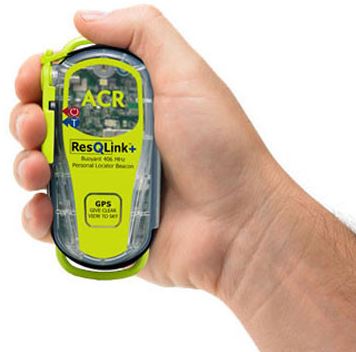
Features
Using the 406 beacon is extremely easy. Just turn it on, and check the blinking LED light to make sure it’s operational. You then keep it on your person. If you ever need to send an SOS signal, you just flip up the plastic tab and it will begin transmitting your GPS location to search and rescue.
Performance
The ResQLink uses a military satellite system known as COSPAS / SARSAT. This is the direct system that search and rescue teams are linked up to. The biggest difference with this system is the transmission power. Other systems need to keep the power low so that there is room for all of the web browsing and texting. Since this system is for emergency use only, it can transmit at 5 watts of power. This is more than 10x the power of the Spot, and 3 times the power of the inReach SE.
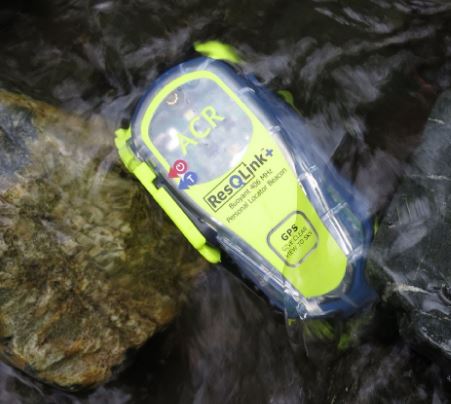
The satellite signal itself runs on the 406 Mhz frequency, but there is also a 121 MHz homing beacon. This signal travels about 500 meters. When the rescue team gets close to you, they can use the homing beacon to better pinpoint your exact location.
Which Beacon is Right for Me?
In a pinch, all of these devices work great for tracking your GPS location. But each of them are designed for completely different things. The Spot Gen3 is designed for people who want to log their movement data for their own personal use. It doesn’t have an interface to speak of, but many users find that this allows them to enjoy the moment, and reflect on their journey at a later time.
If you need a beacon for emergency services, the ACR ResQLink Plus 406 is essential to have. It’s by far the most reliable system on the market, and it connects you directly with the search team instead of relaying you through a middleman.
If you’re looking for communication where most devices cannot get a signal, the DeLorme inReach SE is a great choice. Operating it is a lot more like using a modern smartphone. You get access to GPS data, text messaging, social media, and an entire range of topographical maps that are essential to the motivated explorer.
Meet Derek, “TechGuru,” a 34-year-old technology enthusiast with a deep passion for tech innovations. With extensive experience, he specializes in gaming hardware and software, and has expertise in gadgets, custom PCs, and audio.
Besides writing about tech and reviewing new products, Derek enjoys traveling, hiking, and photography. Committed to keeping up with the latest industry trends, he aims to guide readers in making informed tech decisions.

